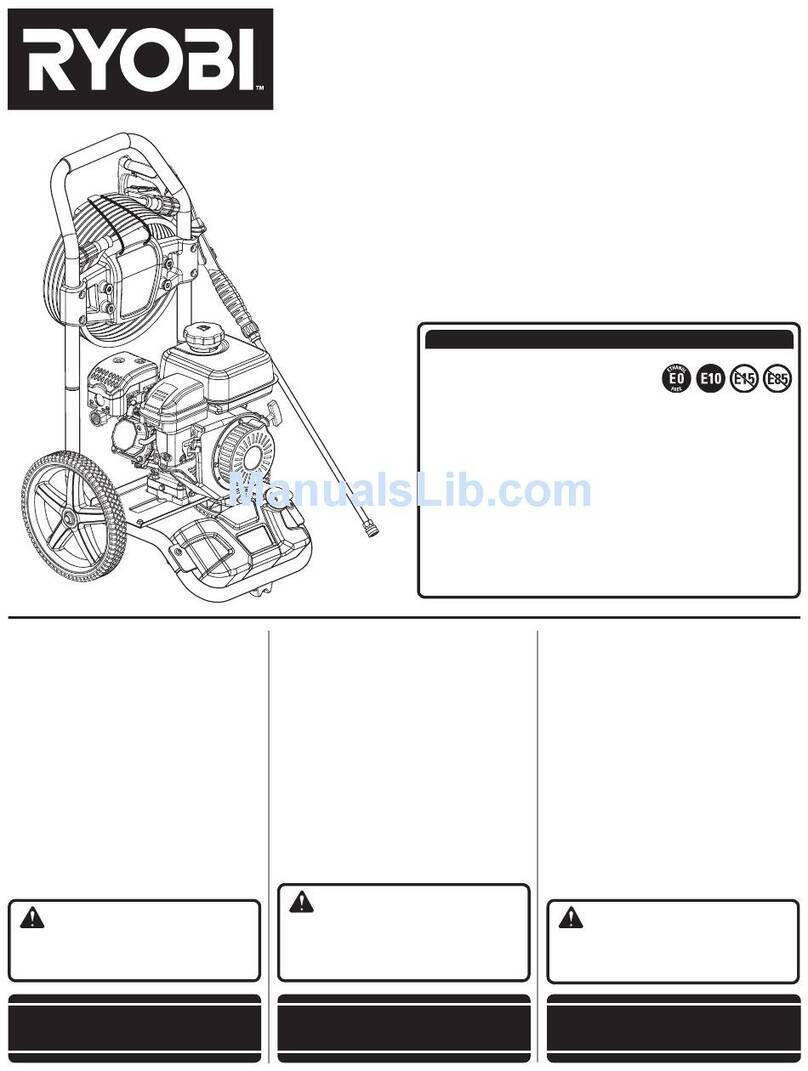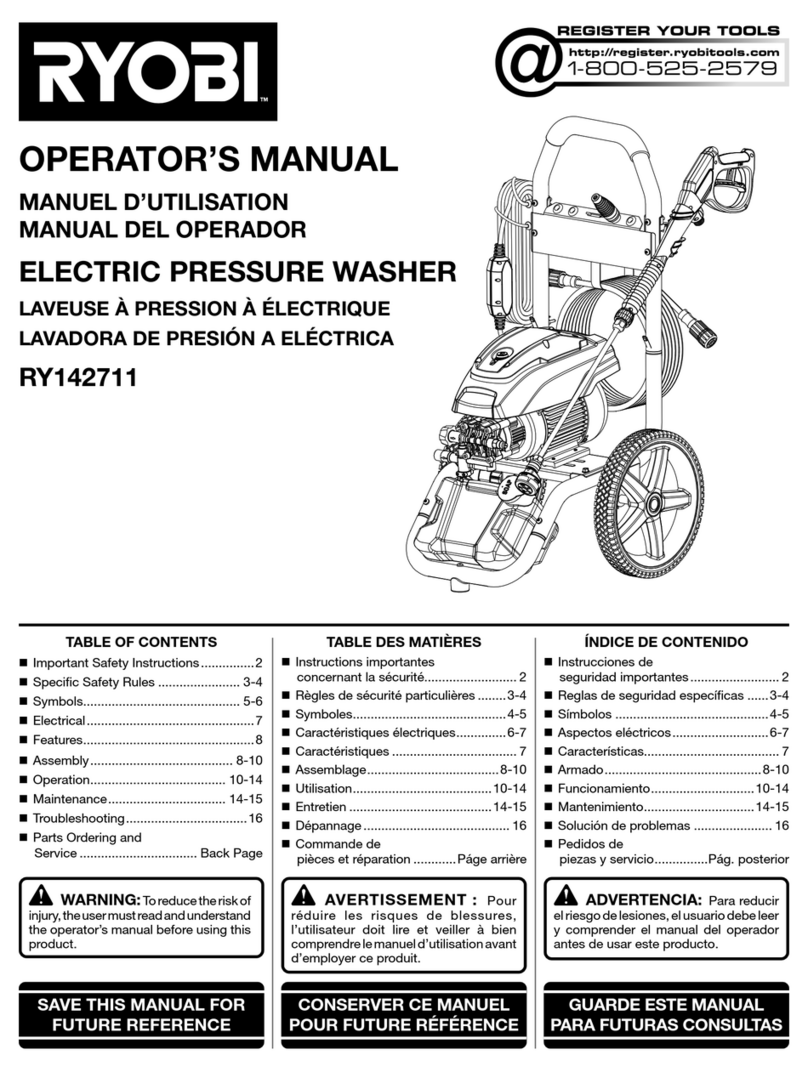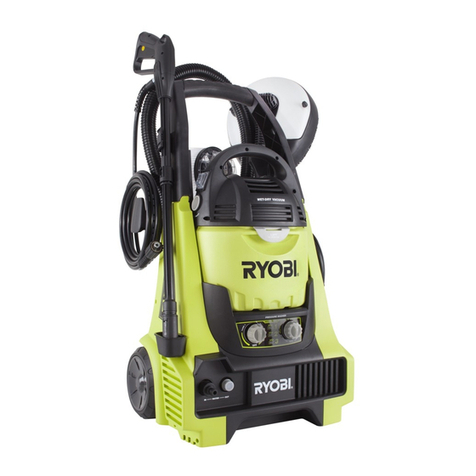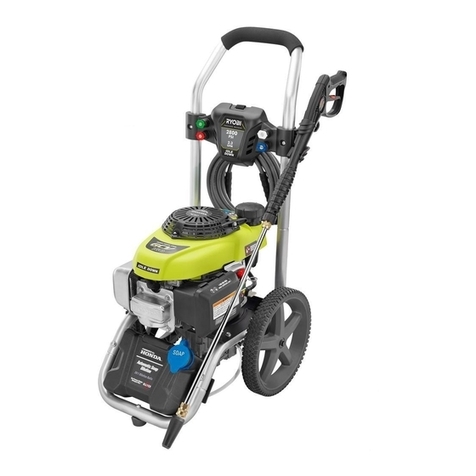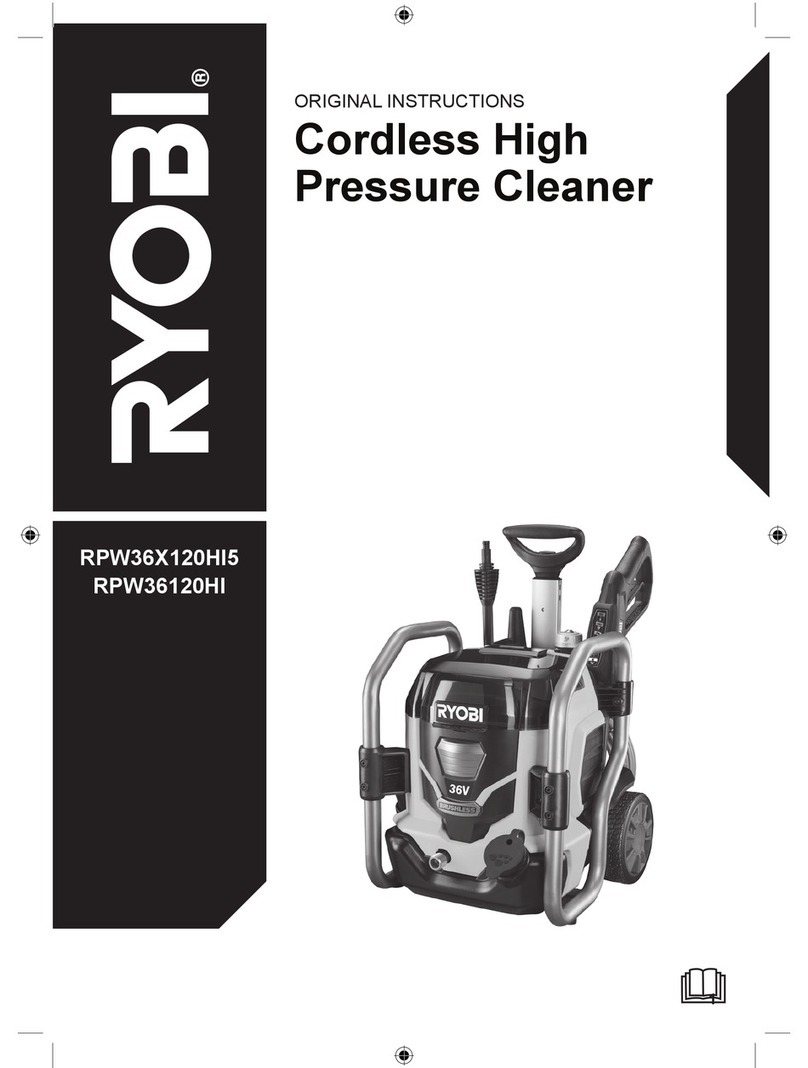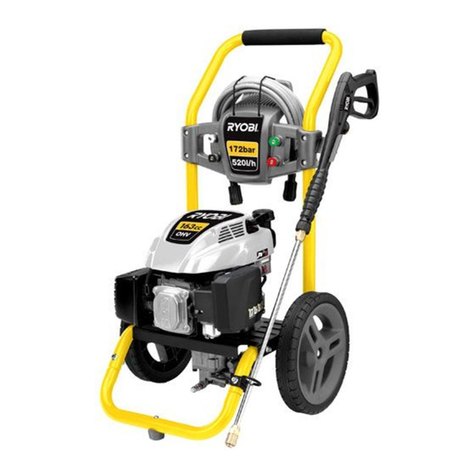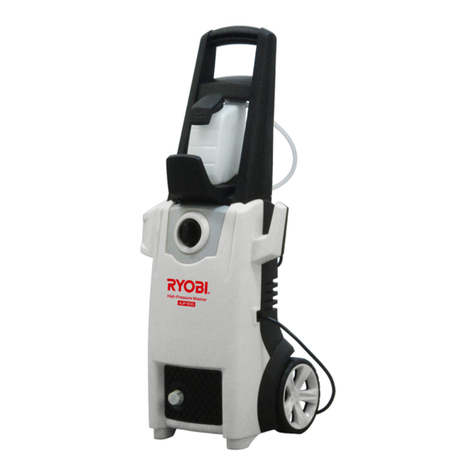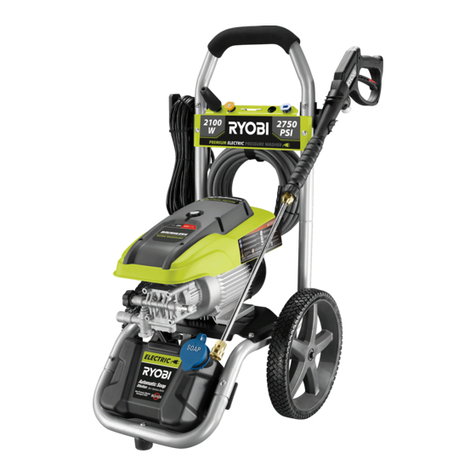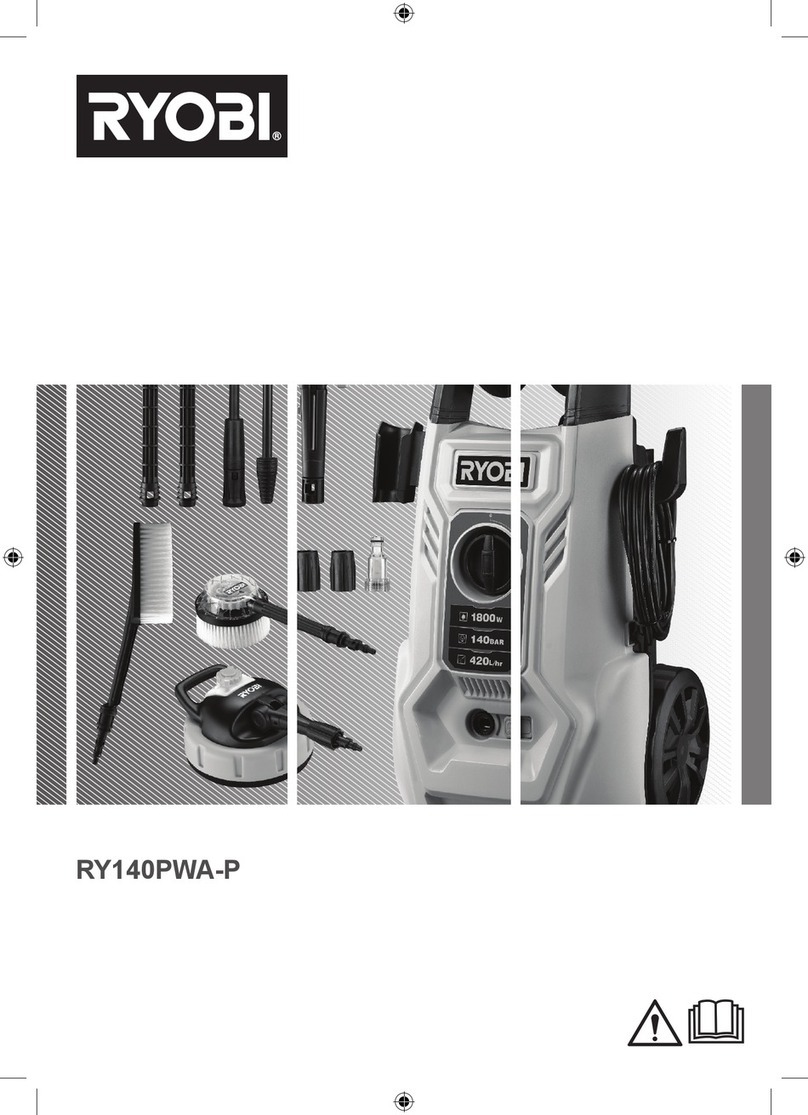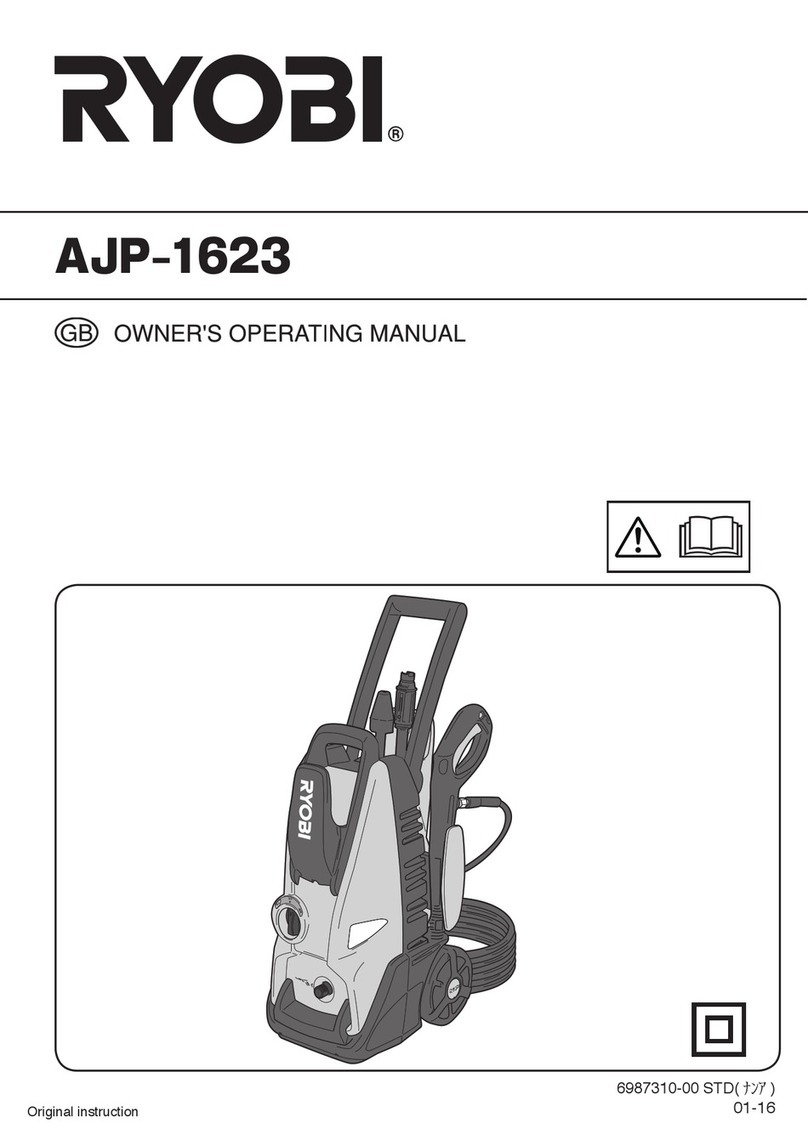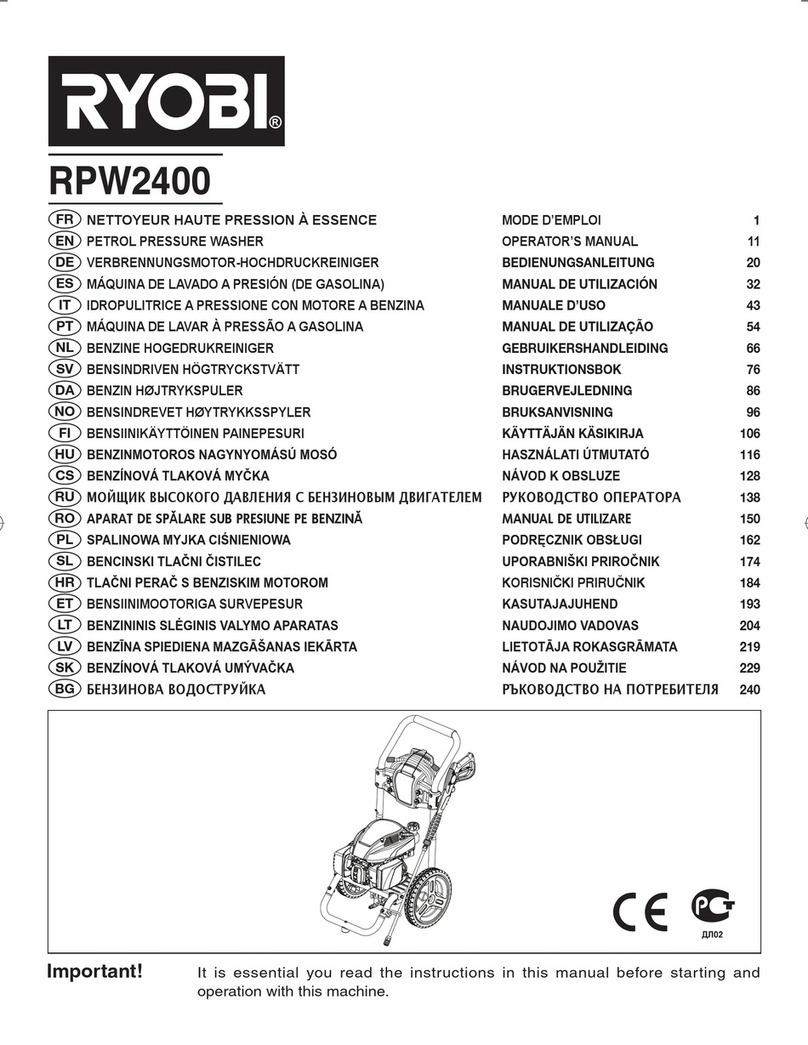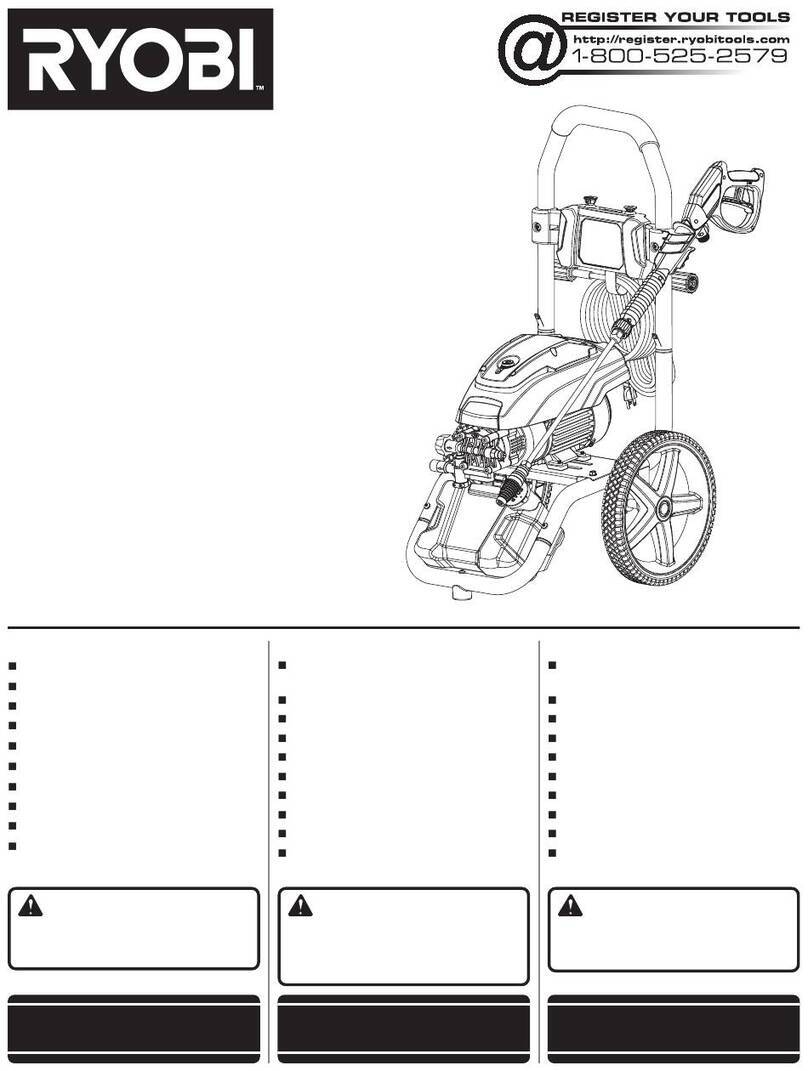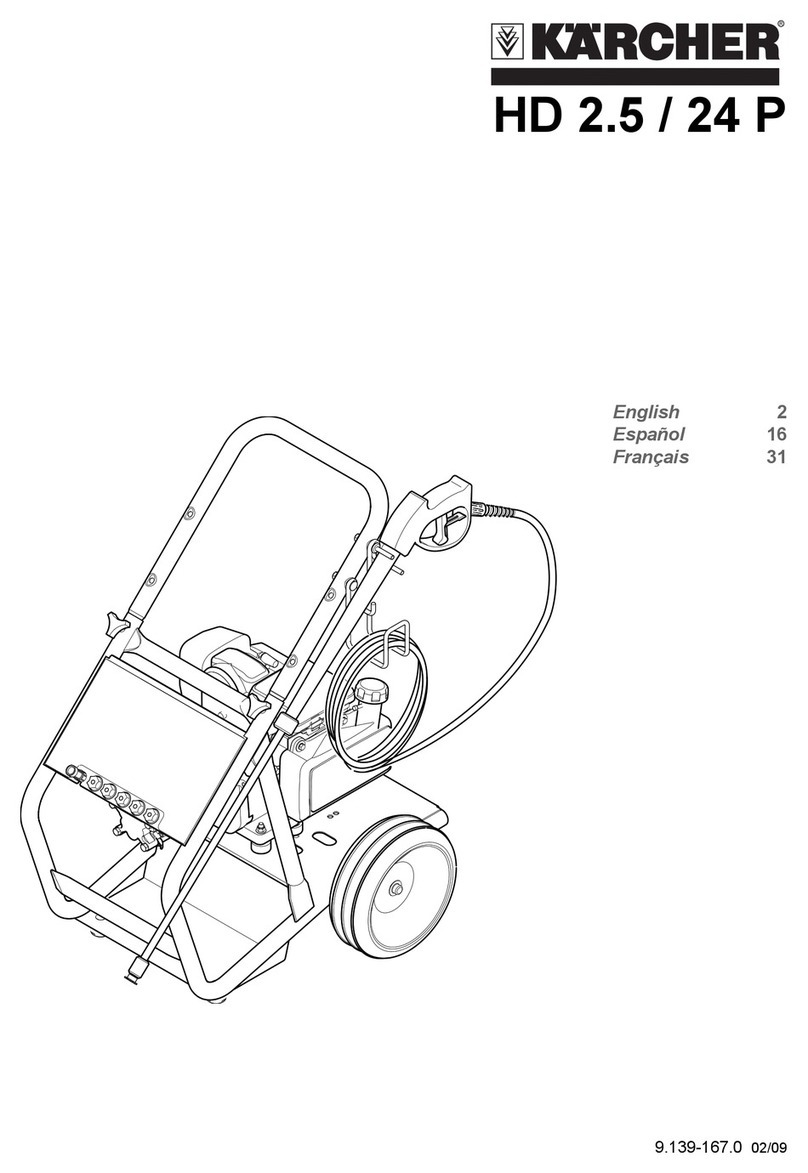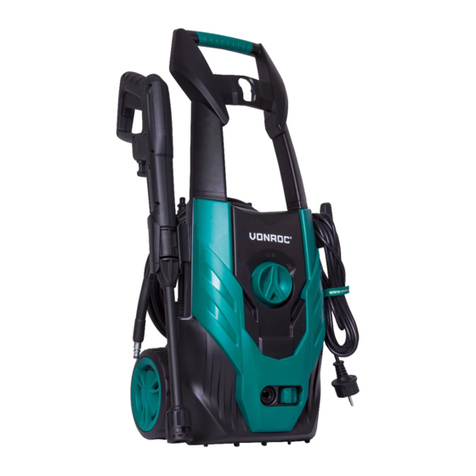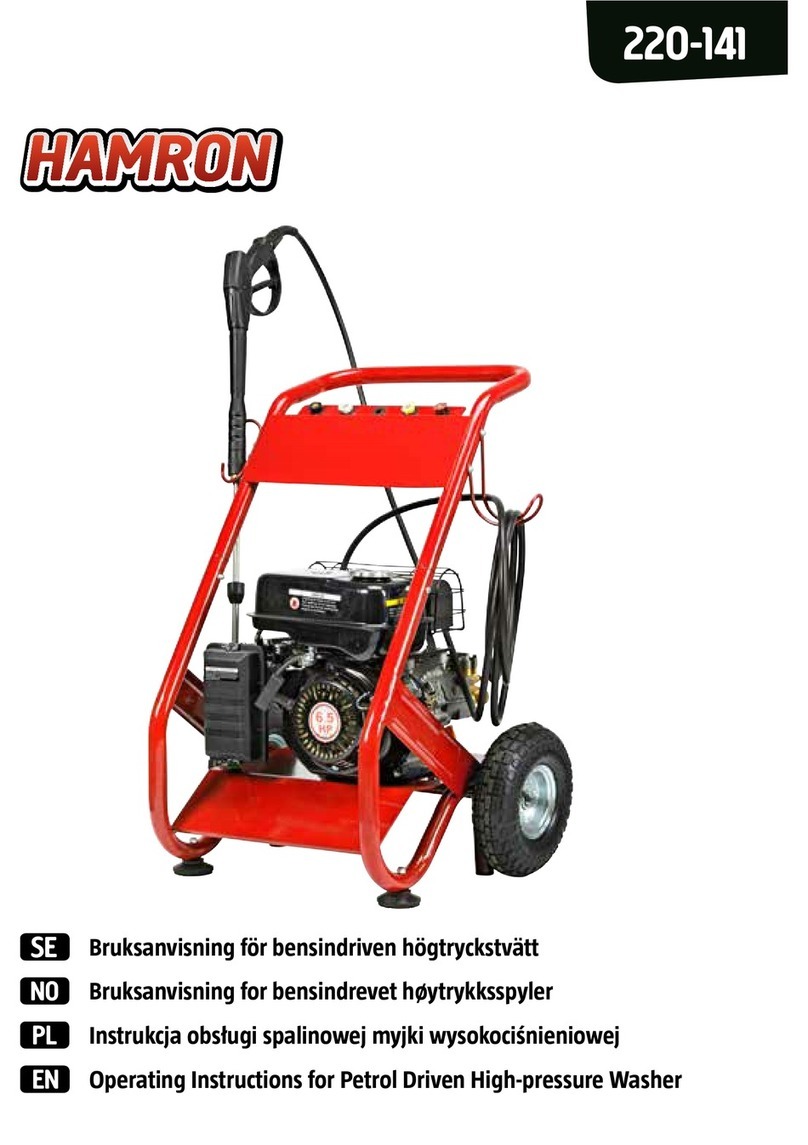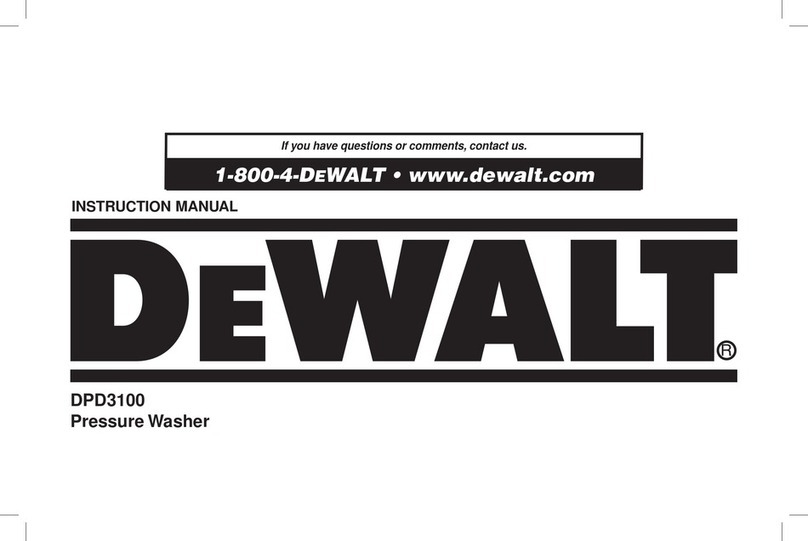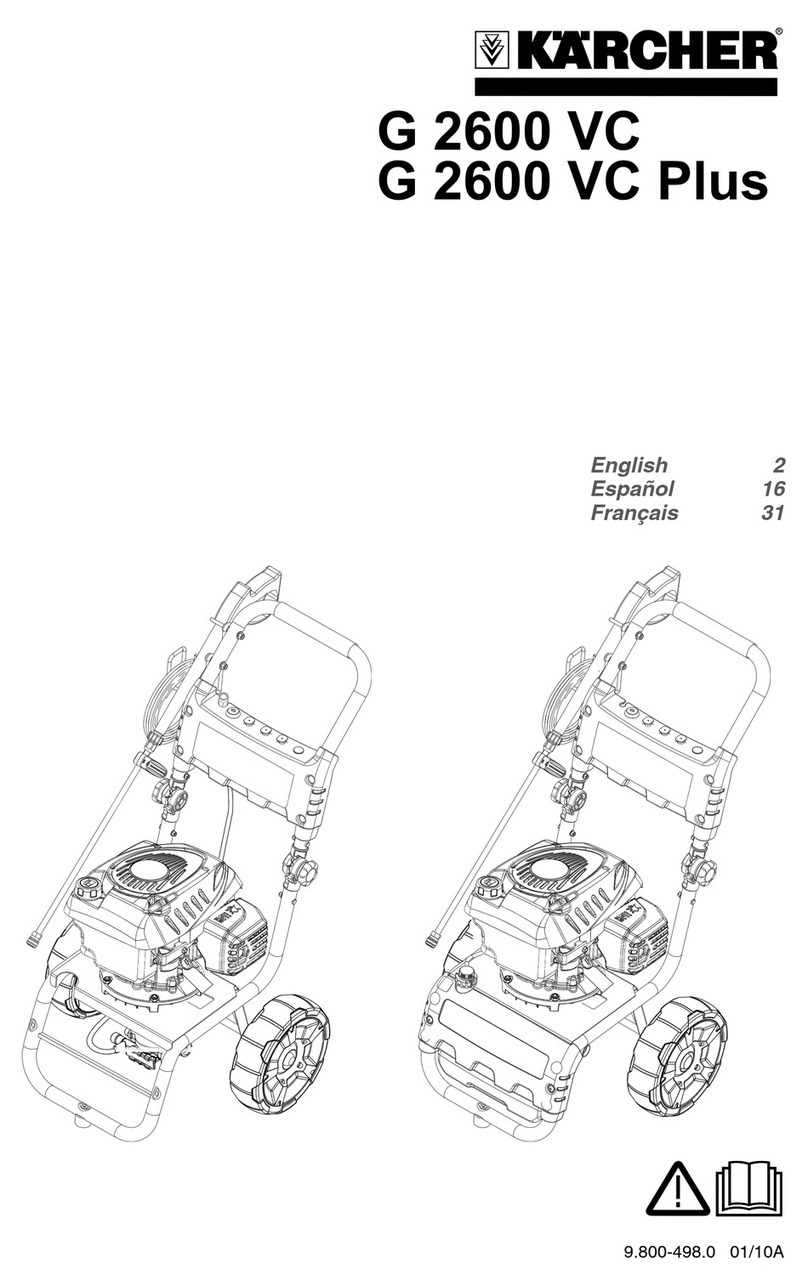
2
equipment, or the product itself.
■To avoid a risk of explosion, do not spray
flammable liquids.
■Do not direct the jet against yourself or
others in order to clean clothes or footwear.
■High-pressure hoses, fittings, and couplings
are important for the safety of the product.
Use only hoses, fittings, and couplings
recommended by the manufacturer.
■Do not use the product indoors unless
adequate ventilation is assessed by the
national labour authorities of your country.
■Do not start the engine in a confined
space where dangerous carbon monoxide
fumes can collect. Carbon monoxide is a
colourless, odourless, and dangerous gas.
It can cause unconsciousness or death.
■Use the product only in a well-ventilated
area, and make sure exhaust gases are
properly discharged. Ensure that any
exhaust emissions are not in the vicinity of
air intakes.
■Only use fuels specified by the
manufacturer. The use of inappropriate
fuels may increase the risk of explosion.
ADDITIONAL SAFETY WARNINGS
■Some regions have regulations that restrict
the use of the product in some operations.
Check with your local authority for advice.
■Before each use, check for damage.
A damaged high-pressure hose must
be replaced immediately. Ensure all
connections, such as high-pressure hose
and nozzle, are secure. Unwind the hose
properly so they will not get twisted or
kinked.
■Do not allow children or untrained
individuals to use the product.
■Before starting any cleaning operation,
close doors and windows to prevent water
from entering. Clear the area to be cleaned
of debris, toys, outdoor furniture, or other
objects that could create a hazard.
■Never pick up or carry the product while the
engine is running.
■Do not use or store the product in
temperatures below 0°C.
■Do not use acids, alkalines, solvents,
flammable material, bleaches, or industrial
grade solutions in the product. These
products can cause physical injuries to the
operator and irreversible damage to the
product.
■Always operate the product on a level
surface. If the engine is on an incline, it
could seize due to improper lubrication,
even if the lubricant is at a maximum level.
WARNING
High-pressure jet can be dangerous if
subject to misuse. The jet must not be
directed to people, animals, electrical
devices, or the product itself.
■Hold the trigger handle securely with both
hands. Expect the trigger handle to move
when the trigger is pulled due to reaction
forces. Failure to do so could cause loss
of control and injury to yourself and others.
■Make sure the air in the hose and pump
is released before you turn on the product.
To remove the air in the hose and pump,
connect the water supply to the pump
using a garden hose, connect the trigger
handle to pump using the high-pressure
hose, disengage the trigger handle lock,
and press the trigger until there is a steady
flow.
■Exercise caution to avoid slipping or falling.
■Keep firm footing and balance. Do not
overreach. Overreaching can result in loss
of balance.
■Only use accessories that are
recommended by the manufacturer. The
use of improper accessories may cause
injury.
■Never leave the product running
unattended. Turn the product off. Do
not leave the product until it comes to a
complete stop.
■Be familiar with the controls. Know how to
stop the product and bleed the pressure
quickly.
■Stay alert and exercise control. Watch what
you are doing and use common sense.
■Do not use the product when you are tired,
ill, or under the influence of drugs, alcohol,
or medication. A moment of inattention
while operating the product may result in
serious personal injury.
■Do not use the product if the switch does not
turn it on and off. Any product that cannot

